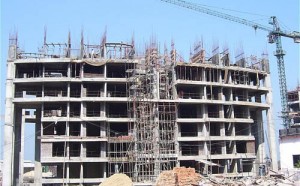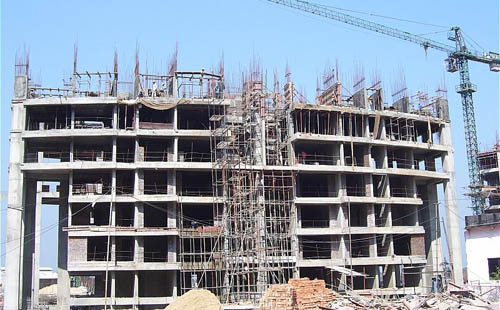 Track2Realty: Mumbai witnessed the launch of approximately 18,000 real estate units during the first half of 2013; representing an increase of 30% compared to the first half of 2012. Of the total launches, 30% were witnessed in the western suburbs of Mumbai which had the highest share in new launches at locations like Andheri, Bandra, Malad and Goregaon. Navi Mumbai contributed 24% of the overall launches with the second phase of a large township project launched in Panvel.
Track2Realty: Mumbai witnessed the launch of approximately 18,000 real estate units during the first half of 2013; representing an increase of 30% compared to the first half of 2012. Of the total launches, 30% were witnessed in the western suburbs of Mumbai which had the highest share in new launches at locations like Andheri, Bandra, Malad and Goregaon. Navi Mumbai contributed 24% of the overall launches with the second phase of a large township project launched in Panvel.
Cushman & Wakefield (C&W) in its quarterly report released on Tuesday, Sep 10, said the central suburban stretch from Kurla to Mulund also contributed 20% of the new launches with two large projects launched in Mulund along with projects in Chembur, Kanjurmarg and Ghatkopar.
Both the western and central suburbs have had a substantial increase in launch activity compared to 2012. With a number of projects currently under construction in Thane, the pace of new launches has declined in 2013.
The prominent submarkets of South, South Central and Western suburbs prime witnessed substantial increase in capital values in the range of 17-24% over the past year due to low availabilities of quality ready apartments. Most high-end and luxury projects at these locations are still under-construction. The other submarkets like Central, Western Suburbs Thane and Navi Mumbai where launches were healthy witnessed capital values appreciate in the range of 3-6% for the mid and high-end segment due to increase input costs.
Shveta Jain, Executive Director, Residential Services, Cushman & Wakefield said, “The share of the high-end segments in new launches have increased substantially in spite of stagnant demand levels in the city. This is largely due to aspects like high land prices and development cost that developers have chosen to go for higher ticket size projects even while the demand is more for affordable and mid – end segments. The subdued sales activity has prompted developers to resort to reducing configurations to reduce ticket size and offer subvention schemes to boost sales.”
The first half of 2012 also had a visible shift in product offerings for new launches. Contribution of the high-end segment increased substantially compared to H1 2012. With stagnant demand levels unsold inventory in under-construction projects are high, however no price correction has been witnessed with developers raising funds through other sources instead of reducing prices to increases sales. Launches in H1 2013 were concentrated in the western and central suburbs where a number of high-end projects were launched.
With demand remaining subdued due to high prices, developers have tried to reduce ticket size by offering smaller configurations especially in South Mumbai locations. This move has helped reduce ticket size by up to 20-25% and increase sales velocity. Most new projects are also offering some form of subvention scheme or favourable payment schedules to attract buyers. A few prominent developers have also delayed launches and are tweaking plans to offer lower priced units to boost sales.
Pan–India Trends
An estimated 47,000 residential units were launched by organized developers in the second quarter of 2013 in major cities registering an increase of approximately 14% over the previous quarter. The unit launches for the first half of the year totaled to approximately 88,177 representing an increase of 11% over the period last year. The mid-end segment continued to constitute majority (58%) of the overall launches during H1 2013. Ahmedabad, Chennai, NCR and Pune were the only cities which witnessed a decline in new project launches in H1 2013 compared to the same period last year.
Mid-end segment has witnessed a y-o-y capital appreciation of about 13-20%. In select micro markets across the cities, the capital appreciation has even exceeded 20%. Bengaluru and Hyderabad have witnessed notable capital appreciation for high-end segment due to increase in demand for such properties in the city.
Select cities saw fluctuation in rental and capital values during the quarter due to change in demand and supply dynamics and investment sentiment. Hyderabad’s submarkets saw the maximum variation in capital values ranging from 5-22% owing to revision of guidance values. Also, select micro markets of Bengaluru witnessed rise in capital values in the range of 15-21% in wake of limited supply and higher land acquisition costs.
Meanwhile, some submarkets in Kolkata and Mumbai witnessed moderate capital appreciation in the range of 3-9% in Q2 2013. NCR on the contrary saw correction in the range of 5-9% in the high-end segment in the back drop of slow transaction activity coupled with cautious buyer sentiments. Rental values on the other hand witnessed uptrend in the range of 2-9% in select micro markets of Hyderabad and Kolkata. However, select high-end submarkets of NCR and Chennai witnessed a drop in rental values in the range of 3-11% owing to lower demand at higher price points.





